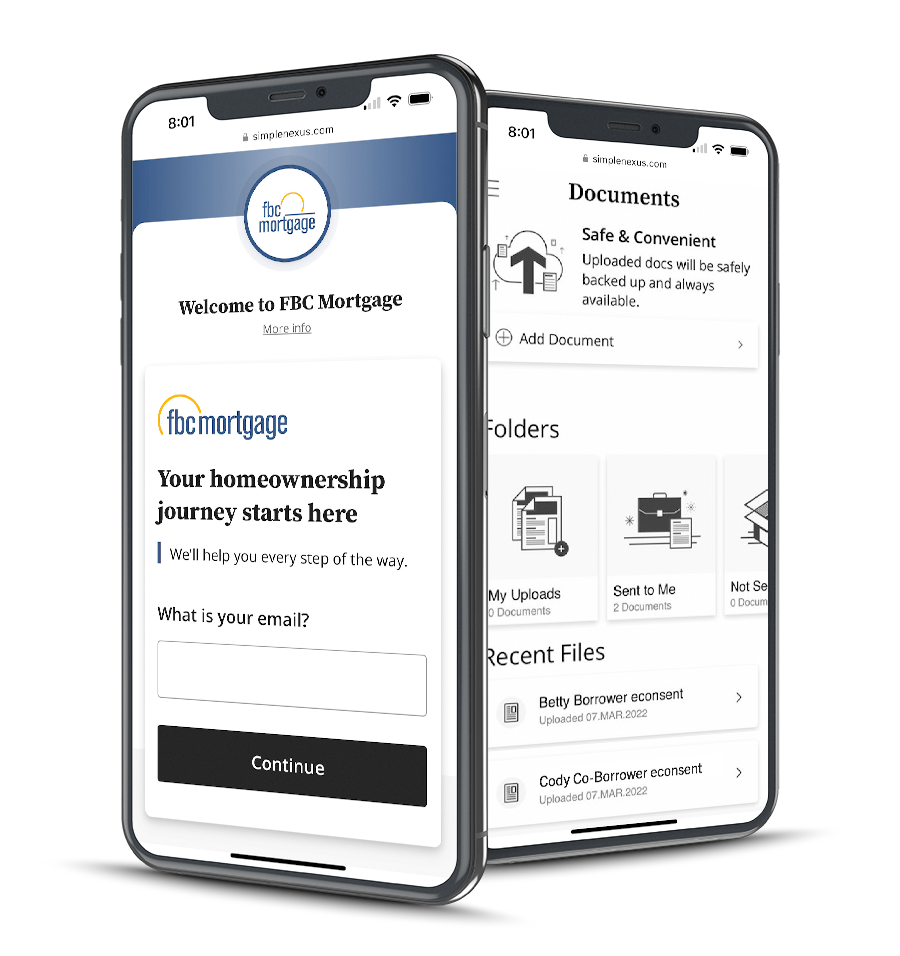Easy Mortgage Application Tips: Streamline Your Journey
- Update Time : Saturday, December 14, 2024

Easy Mortgage Application Tips: Securing a home loan can be daunting. The mortgage application process often seems complex.
Yet, imagine a streamlined, stress-free experience. Picture a journey to homeownership that’s not just a dream, but an achievable reality. Today, the quest for an easy mortgage application is not a far-fetched idea, thanks to modern financial tools and resources.
This introduction will guide you through the essentials of simplifying the mortgage application process. You’ll learn the steps to prepare, what information you’ll need, and how to find the right lender. Our aim is to demystify the path to getting your dream home. With clear, easy-to-follow advice, you’ll feel empowered to take that next step. Dive in to turn the key on a smooth mortgage experience.
Introduction To Easy Mortgage Applications
Welcome to the ‘Introduction to Easy Mortgage Applications’. Navigating the mortgage process can feel overwhelming. Yet, it doesn’t have to be. Our guide simplifies the journey. We help you understand each step. You’ll learn how to breeze through the application. Let’s make your dream home a reality.
The Importance Of Simplifying The Process
Applying for a mortgage can be complex. A simple process saves time. It reduces stress. It helps you make better decisions. Our goal? To make your mortgage application as smooth as possible. You gain clarity. You avoid common pitfalls. A straightforward path to homeownership awaits.
What You Can Expect In This Guide
This guide is your roadmap. It breaks down the mortgage application into easy steps. You’ll find tips for preparation. You’ll learn what documents you need. We explain terms in plain language. You’ll know what to ask lenders. Get ready for a hassle-free mortgage journey.
Assessing Your Financial Health
Before applying for a mortgage, knowing your financial health is key. This step helps you see how ready you are. It’s like checking the weather before a hike. Let’s dive into two main areas: your credit score and your debt-to-income ratio.
Evaluating Credit Scores And History
Your credit score is a big deal. Think of it as your financial grade. Lenders look at this number closely. A good score means better loan terms. So, what makes a good score? Numbers above 670 are solid. But don’t worry if yours isn’t there yet. Small steps can boost it over time. Also, your credit history matters. Lenders check how you’ve handled money before. Paying bills on time helps a lot here.
Understanding Debt-to-income Ratio
Next, let’s talk about your debt-to-income ratio, or DTI. It’s all about balance. This ratio compares what you owe each month to what you earn. Lower DTI? Better chances for loan approval. Aim for a DTI under 36%. Keeping this ratio low shows lenders you manage money well. It’s like showing you can run a marathon without getting winded.
Gathering Essential Documents
Preparing for a mortgage application means gathering the right papers. Think of it like a puzzle. Each document is a piece that helps complete the picture of your finances. Begin with the basics: proof of income and details of assets. These show lenders you can afford the mortgage. Let’s break down what you’ll need.
Income Verification Papers
Show lenders you have steady income. Collect recent pay stubs, tax returns, and W-2 forms. If self-employed, gather 1099s or profit and loss statements. These papers prove you have the funds to pay back the loan.
Asset And Investment Statements
Your savings and investments can play a big role. Bank statements show you have money saved. Investment reports show you have extra funds. Lenders use these to check if you can cover down payments and closing costs.

Credit: fbchomeloans.com
Choosing The Right Mortgage Type
Choosing the right mortgage starts with understanding options. Each type offers unique benefits. The right choice depends on individual financial situations and long-term goals.
Fixed-rate Vs. Adjustable-rate Mortgages
Fixed-rate mortgages offer stability. Your interest rate and monthly payments stay the same. They’re ideal for planning long-term budgets.
Adjustable-rate mortgages (ARMs) start with lower rates. Yet, they can change. This means your payments could increase or decrease.
- Fixed-rate pros: Predictable payments, long-term savings if rates increase.
- Fixed-rate cons: Higher initial rates, less flexibility.
- ARM pros: Lower initial payments, potential savings if rates fall.
- ARM cons: Payment uncertainty, potential for higher costs.
Government-backed Loans: Pros And Cons
Government-backed loans support buyers with less savings or lower credit scores. They include FHA, VA, and USDA loans.
| Loan Type | Pros | Cons |
|---|---|---|
| FHA | Low down payments, easier qualification. | Required mortgage insurance. |
| VA | No down payment, no mortgage insurance. | Limited to veterans, some fees apply. |
| USDA | No down payment, low interest rates. | Geographic and income restrictions. |
Shopping For Lenders
Shopping for Lenders is a key step in the mortgage application process. It involves looking at different banks and loan companies. This helps you find the best deal.
Comparing Rates And Fees
Start by looking at interest rates and fees. These can vary a lot between lenders. A lower rate can save you money over time.
- Interest rates affect your monthly payment.
- Fees can include application or appraisal fees.
Use a table to compare rates and fees. This makes it easier.
| Lender | Interest Rate | Fees |
|---|---|---|
| Lender A | 3.5% | $500 |
| Lender B | 3.75% | $600 |
Reading Reviews And Checking Credentials
Next, read reviews and check credentials. Good lenders have happy customers and the right licenses.
- Look for online reviews.
- Check lender’s license on official websites.
Choosing a trusted lender is important for a smooth process.

Credit: www.homesteadfinancial.com
Understanding Pre-approval
Embarking on the mortgage journey begins with pre-approval. It’s a step that shows sellers your buying power. Think of it as your financial passport when house hunting.
The Pre-approval Process
Lenders check your credit and finances. You’ll need proof of income, assets, and employment. It’s a thorough review, but it sets you up for later success.
- Submit documents: Tax returns, pay stubs, and bank statements.
- Lender assessment: A deep dive into your credit history and debt levels.
- Approval letter: This confirms how much you can borrow.
Benefits Of Getting Pre-approved
Pre-approval has its perks. Sellers take you seriously and you know what you can afford. It’s a clear advantage in a competitive market.
- Buyer credibility: Shows sellers you’re a serious contender.
- Budget clarity: Understand your price range before you look.
- Faster closing: With pre-approval, the loan process speeds up.
Navigating the mortgage application process can seem tough. Yet, it’s key to getting your dream home. This guide makes it simple. First, focus on filling out forms right. Then, dodge common errors. Let’s dive in.
Filling Out Forms Accurately
Accuracy matters most. Double-check your info. Wrong details slow things down. Spell your name right. Enter income and debts clearly. Don’t rush. Taking time now saves time later.
Avoiding Common Mistakes
Common errors can hurt your chances. Don’t leave blanks. Answer every question. Check your credit score first. Fix mistakes on it before applying. Lastly, be honest. False info leads to trouble.

Credit: www.citizensbank.com
After Submission: Next Steps
The mortgage application is in. Now, breathe. It’s time for the next steps. Lenders review your details. Be ready to answer questions and gather more information. Understand what happens after hitting ‘submit’.
Responding To Lender Inquiries
Lenders may reach out for extra details. Keep documents handy. Quick responses keep your application moving. Expect questions on income, assets, and credit history.
- Check emails and voicemails regularly.
- Provide clear, complete answers.
- Send requested documents promptly.
Preparing For Appraisal And Inspection
Appraisals and inspections are crucial. They ensure the property’s value and condition. The lender will arrange an appraisal. You should schedule an inspection.
| Task | Description |
|---|---|
| Appraisal | Confirms home’s market value for the lender. |
| Inspection | Checks for defects or issues in the property. |
- Choose a licensed inspector.
- Review the report carefully.
- Discuss any concerns with the seller.
Closing The Deal
Reaching the end of a mortgage application marks a milestone. It’s time to close the deal. This stage involves specific steps, each vital to securing your new home. Let’s dive into what you can expect during the closing process.
Understanding Closing Costs
Closing costs often catch buyers off guard. They include various fees and expenses. You might see charges for loan origination, home appraisal, and title insurance. It’s crucial to review these costs early. Your lender should provide a Closing Disclosure form. This form details every charge you’ll face. Knowing these costs upfront helps avoid surprises on closing day.
Final Walkthrough And Document Signing
Before signing, a final walkthrough is a must. This is your last chance to check the property. Look for any issues that need fixing before you take ownership. After the walkthrough, it’s time for document signing. This is when you legally commit to the mortgage. The pile of paperwork can be daunting. Your signature will be needed on the mortgage note, the deed, and more. Take your time to understand each document. Ask questions if you’re unsure about anything. Once signed, the keys to your new home will be yours.
Maintaining Your Mortgage
After securing a mortgage, keeping it manageable is key. Let’s explore simple steps to maintain your mortgage effectively. The focus is on setting up payments and considering refinancing options.
Setting Up Payments
Organize your finances to make mortgage payments stress-free. Choose a payment plan that suits your budget. Opt for automatic payments to avoid missed deadlines.
- Check with your lender for payment frequency options.
- Align payments with your income schedule.
- Set reminders for due dates or enroll in auto-pay.
Review your statement regularly. Ensure you’re on track with your mortgage plan.
Considering Refinancing Options
Refinancing can offer financial relief. Lower interest rates or a changed mortgage term can save money.
| Current Interest Rate | Refinanced Rate | Monthly Savings |
|---|---|---|
| 4.5% | 3.5% | $150 |
- Assess your current interest rate.
- Compare with available refinancing rates.
- Calculate potential savings.
Consult a financial advisor to understand refinancing benefits. Make an informed decision based on your financial goals.
Frequently Asked Questions
What Documents Are Needed For A Mortgage Application?
For a mortgage application, you typically need proof of income (such as pay stubs), tax returns, credit reports, employment verification, and identification documents. Lenders use these to assess your financial situation and ability to repay the loan.
How Long Does The Mortgage Application Process Take?
The mortgage application process can take anywhere from a few weeks to a few months. This timeline depends on the lender’s backlog, the complexity of your financial situation, and how quickly you can provide necessary documents.
Can I Apply For A Mortgage With Bad Credit?
Yes, you can apply for a mortgage with bad credit, but your options may be limited. Lenders often require higher down payments or charge higher interest rates to offset the risk. It’s advisable to improve your credit score before applying.
How Much Deposit Do I Need For A Mortgage?
The deposit required for a mortgage typically ranges from 5% to 20% of the property’s purchase price. Higher deposits can secure better mortgage rates and terms, as they reduce the lender’s risk.
Conclusion
Securing a mortgage doesn’t have to be tough. Follow these easy steps, and you’re on your way. Gather your documents, understand your credit, and choose the right lender. Remember, patience is key. Take your time and get it right. Need help?
Reach out to a trusted advisor. Your dream home awaits. Good luck with your mortgage application journey!

















Leave a Reply